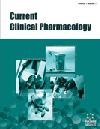- Home
- A-Z Publications
- Current Clinical Pharmacology
- Previous Issues
- Volume 6, Issue 2, 2011
Current Clinical Pharmacology - Volume 6, Issue 2, 2011
Volume 6, Issue 2, 2011
-
-
Editorial [Hot Topic: Compliance, Adherence and Concordance in Medicine Taking of Psychiatric Patients (Guest Editor: Carlos De las Cuevas)]
More LessAlthough Hippocrates, almost 2500 years ago, recognized the difficulties of patient compliance when he wrote “Keep watch also on the faults of the patients, which often make them lie about the taking of things prescribed” [1], the topic continues to produce considerable controversy at present. Dictionaries tend to be slow assuming the evolution of language and incorporating new terms. However, in medicine it is essential the ra Read More
-
-
-
Towards a Clarification of Terminology in Medicine Taking Behavior: Compliance, Adherence and Concordance are Related Although Different Terms with Different Uses
More LessMedical terminology is at continuous process of change since the language of medicine needs the rapid incorporation of new terms or changing the existing ones to be in touch with new ideas, concepts and practices. The evolution of the terms “compliance”, “adherence” and “concordance” in the field of medicine-taking represents a good example of this. Although these three terms are frequently used interchangeably generat Read More
-
-
-
It is Now Personal: Recent Views on the Assessment of Therapeutic Infidelity in Severe Mental Illness
More LessThis paper starts with an attempt to chart the contemporary history of the term “Compliance” and its cognates. It also discusses the recently published guidelines concerning the assessment of adherence in patients with serious mental illnesses, dedicating its middle part to comment on the research and clinical methods to assess adherence in patients. The current consensus amongst experts can be summarized, from a Read More
-
-
-
Patient Involvement and Shared Decision-Making in Mental Health Care
More LessThere is growing interest in shared decision-making (SDM) in which the provider and patient go through each phase of the decision-making process together, share treatment preferences, and reach an agreement on treatment choice. Although a majority of the research evaluating SDM has been conducted under “physical” health conditions, patients' participation and SDM for mental health conditions has received increasing Read More
-
-
-
From Treatment Adherence to Advanced Shared Decision Making: New Professional Strategies and Attitudes in Mental Health Care
More LessTreatment adherence is related to “self-regulation” of prescribed drugs. Patients organise their drug intake around their own priorities, which may be very different from prescribers' priorities, since most of the patients value their personal concerns and/or their social roles more than the benefits of a prescribed treatment. A gap exists between patients' and professionals' views. This gap is mainly related to patients' health Read More
-
-
-
Determinants of Medicine-Taking in Psychiatric Patients
More LessAuthors: Carlos Garcia-Ribera and Antoni BulbenaLack of adherence is a universal risk in medicine. Its consequences in terms of outcome, suffering and economic costs are immense. This is a selective review of the putative factors involved in medicine taking behavior. Adherence is multidetermined by a number of variables ranging from patient sociodemographic characteristics to factors related to patient/ psychiatrist interaction, drug tolerability and organization of care. Read More
-
-
-
Users Perception of Risk and Benefits of Mood Modifying Drugs
More LessAuthors: Vinita Mahtani-Chugani and Emilio J. SanzThis article presents a narrative review of qualitative research about reasons users consuming mood modifying drugs have to continue or discontinue medicine taking. Qualitative research provides insight to the phenomena of interest and has been used to understand how patients take medicines and identifies explicative models. Researchers have looked at how mood modifying drugs consumption fit in different models Read More
-
-
-
Cost-Effectiveness of Interventions to Enhance Medication Adherence in Psychiatric Patients: A Systematic Review
More LessAuthors: Lidia Garcia-Perez and Pedro Serrano-AguilarIt was conducted a systematic review of economic evaluations that assessed the cost-effectiveness of interventions to enhance the medication adherence in psychiatric patients. Several bibliographic databases were searched: MEDLINE, MEDLINE in process, PSYCINFO, EMBASE, Cochrane Controlled Trials Register, CINAHL, CRD, EconLit, Science Citation Index and Social Science Citation Index. Full economic evaluations whic Read More
-
-
-
Designer Drugs on the Internet: A Phenomenon Out-of-Control? The Emergence of Hallucinogenic Drug Bromo-Dragonfly
More LessAuthors: Ornella Corazza, Fabrizio Schifano, Magi Farre, Paolo Deluca, Zoe Davey, Colin Drummond, Marta Torrens, Zsolt Demetrovics, Lucia Di Furia, Liv Flesland, Barbara Mervo, Jacek Moskalewicz, Agnieszka Pisarska, Harry Shapiro, Holger Siemann, Arvid Skutle, Cinzia Pezzolesi, Peer Van Der Kreeft and Norbert ScherbaumBased on the material available in both the scientific literature and on the web, the present paper provides an updated pharmacological, chemical, toxicological and behavioural overview of Bromo-Dragonfly (1-(8-bromobenzo[1,2- b;4,5-b']difuran-4-yl)-2-aminopropane; ‘ B-fly’). B-Fly is a powerful, long lasting, LSD-like, hallucinogenic drug, which has been associated with a number of acute intoxications and fatalities in a n Read More
-
-
-
Emerging Immunosuppressive Drugs in Kidney Transplantation
More LessAuthors: Christoph Metalidis and Dirk R.J. KuypersCalcineurin inhibitors (CNI), a cornerstone of current immunosuppressive therapy, have important cardiovascular and oncogenic side effects and CNI nephrotoxicity contributes to the multifactorial process called “chronic allograft dysfunction”, the leading cause of chronic allograft failure among kidney transplant recipients. New drugs, with a different mechanism of action, are being developed focusing on a better balance Read More
-
-
-
Tissue Protective and Anti-Fibrotic Actions of Suramin: New Uses of an Old Drug
More LessAuthors: Na Liu and Shougang ZhuangSuramin is a polysulfonated naphthylurea, which was originally synthesized and designed as a treatment for trypanosomiasis and selected malignancies and metastatic diseases. Increasing evidence indicates that suramin is also effective in interfering with many other pathophysiological processes in animal models. For example, suramin can enhance renal regeneration after ischemia/reperfusion injury, attenuate liver da Read More
-
Volumes & issues
Most Read This Month
Article
content/journals/ccp
Journal
10
5
false
en


